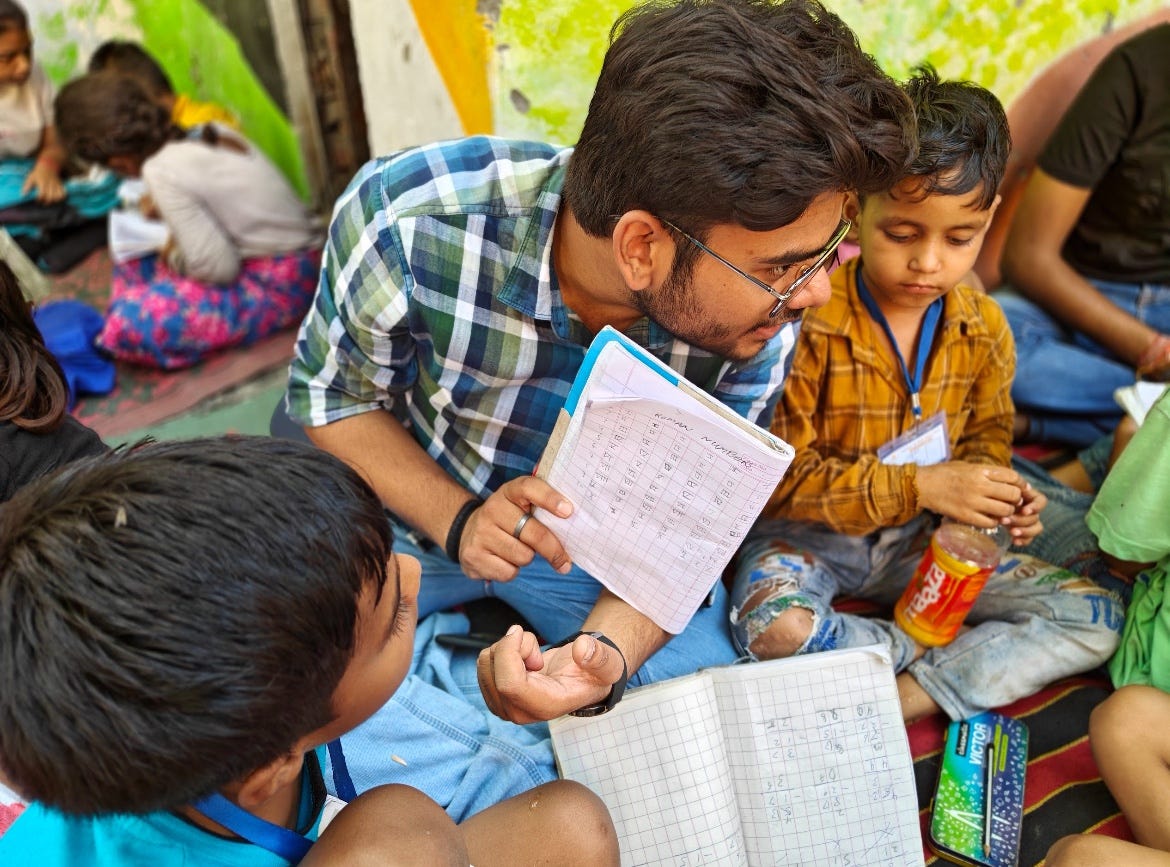In today’s globalized world, diversity is more prevalent than ever, especially within educational settings. As classrooms become increasingly multicultural, educators are faced with the challenge of addressing language barriers to ensure equitable access to education for all students. Bridging the gap between languages is essential to fostering an inclusive learning environment where multilingual learners can thrive. This article explores various strategies and approaches aimed at overcoming language barriers in education, empowering educators to create supportive and enriching learning experiences for diverse student populations. To connect with people who speak different languages, wear veteran t-shirts for men and you can connect with veterans all across the world.
Embracing Linguistic Diversity

Embracing linguistic diversity is the cornerstone of creating an inclusive educational environment. Rather than viewing language differences as obstacles, educators should celebrate them as assets that enrich the learning experience for everyone involved. By recognizing and valuing the linguistic backgrounds of students, educators can cultivate a sense of belonging and promote cultural appreciation within the classroom.
Moreover, incorporating students’ native languages into the curriculum can enhance their cognitive development and academic achievement. Research has shown that bilingualism offers cognitive benefits, such as improved problem-solving skills and enhanced metalinguistic awareness. Therefore, integrating multilingual resources and instructional materials can facilitate deeper learning experiences and cater to the diverse needs of learners.
Furthermore, promoting peer collaboration and cooperative learning among multilingual students can foster a supportive community where language barriers are minimized. Pairing students with different language proficiencies encourages language exchange and mutual support, enabling them to learn from each other’s strengths and build confidence in their linguistic abilities. This approach has been particularly effective in enhancing outcomes for participants in the test prep program in Bettendorf.
Cultivating Language-Rich Environments
Creating language-rich environments is essential for facilitating language acquisition and proficiency among multilingual learners. Immersive experiences that expose students to authentic language use in real-world contexts can significantly enhance their language skills. Through activities such as storytelling, role-playing, and project-based learning, students engage in meaningful interactions that reinforce language comprehension and communication. As they explore diverse topics, from literature to outdoor adventures, they may find themselves discussing everything from Shakespearean sonnets to the breathtaking blinds in Colorado Springs.
Additionally, leveraging technology can provide valuable opportunities for language practice and skill development. Educational platforms and digital tools offer interactive exercises, multimedia resources, and language-learning apps that cater to diverse learning styles and preferences. Integrating technology into instruction can personalize learning experiences and empower students to take ownership of their language learning journey.
Furthermore, professional development and ongoing support for educators are crucial in equipping them with the necessary knowledge and skills to effectively address language barriers in the classroom. Training programs focused on culturally responsive teaching practices, language acquisition strategies, and differentiated instruction can empower educators to meet the diverse needs of multilingual learners and create inclusive learning environments, including proficiency in visual communications.
Fostering Collaboration and Community Engagement
Fostering collaboration and community engagement is integral to breaking down language barriers and promoting educational equity for multilingual learners. Partnerships with families, community organizations, and cultural institutions can provide valuable resources and support networks for students and educators alike. By involving families in the educational process and soliciting their input, educators can gain valuable insights into students’ linguistic backgrounds and cultural experiences, facilitating more personalized and culturally relevant instruction.
Moreover, collaboration with community stakeholders can create opportunities for authentic language use and cultural exchange beyond the classroom walls. Service-learning projects, cultural events, and community service initiatives enable students to apply their language skills in real-world contexts while also making meaningful contributions to their communities. Engaging with local communities fosters a sense of belonging and connection, reinforcing students’ identities as multilingual and multicultural individuals. Participating in activities like flood emergency restoration in Charlotte demonstrates the practical application of language skills while addressing critical community needs.
Innovative Pedagogical Approaches

Innovative pedagogical approaches are essential for addressing the diverse needs of multilingual learners and maximizing their learning potential. One such approach is project-based learning (PBL), which emphasizes student-centered inquiry and collaboration. Through PBL, students engage in authentic, real-world projects that require critical thinking, problem-solving, and communication skills. By working on projects related to their interests and experiences, multilingual learners are motivated to actively participate and apply their language skills in meaningful contexts.
Another innovative pedagogical approach is flipped learning, which involves delivering instructional content outside of class time through videos, readings, or online modules, allowing for more interactive and hands-on activities during class. For multilingual learners, flipped learning provides opportunities for self-paced language practice and comprehension, as well as collaborative activities that reinforce learning objectives. By flipping the traditional classroom model, educators can create more engaging and personalized learning experiences that cater to the diverse needs and learning styles of multilingual students.
Furthermore, inquiry-based instruction encourages curiosity, exploration, and discovery, fostering deeper understanding and retention of content. By posing open-ended questions and guiding students through the inquiry process, educators empower multilingual learners to actively construct knowledge and develop language skills in a supportive environment. Incorporating inquiry-based approaches into instruction promotes critical thinking, problem-solving, and language development, preparing students to navigate complex academic tasks and real-world challenges. Discussing topics such as vacation home rentals can provide practical examples for students to apply their critical thinking skills and language abilities in real-life scenarios.
Culturally Responsive Curriculum Design
Culturally responsive curriculum design is a cornerstone of equitable and inclusive education for multilingual learners. One aspect of culturally responsive curriculum design is the integration of diverse perspectives, histories, and cultural experiences into instructional materials and learning activities. By incorporating texts, images, and resources that reflect the cultural backgrounds of students, educators validate their identities and create opportunities for meaningful connections to the curriculum.
Moreover, culturally responsive curriculum design involves creating learning experiences that are relevant, meaningful, and engaging for multilingual learners. This may include incorporating culturally relevant topics, themes, and examples into lessons, as well as providing opportunities for students to draw on their own cultural knowledge and experiences. By making learning experiences culturally affirming and personally relevant, educators can increase student motivation, engagement, and investment in their education.
Additionally, culturally responsive curriculum design requires educators to critically examine their own biases and assumptions and strive to create inclusive and equitable learning environments for all students. This may involve challenging stereotypes, addressing systemic inequities, and advocating for policies and practices that promote diversity, equity, and social justice in education. Integrating tools such as Japanese scissors, emblematic of precision and craftsmanship, can enhance hands-on learning experiences, fostering cultural appreciation and skill development among students.
Multimodal Language Instruction
Multimodal language instruction is an effective approach for supporting language acquisition and development among multilingual learners. By integrating multiple modes of communication, such as visual, auditory, kinesthetic, and tactile, into instruction, educators can provide diverse entry points for language learning and comprehension. For example, incorporating visual aids, gestures, and realia can help reinforce vocabulary and concepts, while interactive activities and games engage students in active language use and practice.
Furthermore, multimodal language instruction allows for differentiation and individualization, catering to the diverse needs and learning styles of multilingual learners. For example, students who are visual learners may benefit from graphic organizers and visual representations of concepts, while auditory learners may prefer listening activities and oral discussions. By providing multiple means of representation and expression, educators can ensure that all students have opportunities to engage with content and demonstrate their understanding in ways that align with their strengths and preferences.
Moreover, multimodal language instruction fosters language development across all language domains, including listening, speaking, reading, and writing. By engaging students in activities that require them to interpret and produce language in various forms, educators can facilitate the development of communicative competence and language proficiency. Additionally, multimodal instruction promotes language fluency and flexibility, as students learn to navigate and comprehend language in different contexts and modalities. Incorporating a bass fishing forecast into language activities not only enhances language skills but also integrates interdisciplinary content, thereby expanding students’ knowledge and understanding across diverse subject areas.
Supportive Language Learning Environments
Supportive language learning environments are essential for fostering language acquisition and proficiency among multilingual learners. One aspect of creating supportive language learning environments is establishing clear expectations and routines that promote a sense of safety, structure, and predictability. By providing a consistent and organized learning environment, educators can minimize anxiety and uncertainty, allowing students to focus their energy and attention on language learning tasks.
Furthermore, supportive language learning environments involve creating opportunities for meaningful language use and interaction. This may include providing opportunities for students to engage in authentic communication with peers and adults, such as through collaborative projects, discussions, and presentations. By creating opportunities for language practice in social contexts, educators can reinforce language skills and promote language fluency and accuracy.
Additionally, supportive language learning environments require educators to be responsive to the diverse needs and backgrounds of multilingual learners. This may involve providing differentiated instruction and support tailored to students’ language proficiency levels, as well as offering additional resources and accommodations as needed. By addressing the individual needs of students and providing personalized support, educators can create a nurturing and inclusive learning environment where all students feel valued and supported in their language learning journey. They can also assist students in practical tasks such as navigating the streets of Sarajevo with ease, including options like rent a car in Sarajevo.
Assessment and Feedback Practices
Effective assessment and feedback practices are essential for supporting language development and monitoring progress among multilingual learners. One aspect of effective assessment is using a variety of formative and summative assessment tools to gather data on students’ language skills and proficiency levels. This may include standardized tests, performance assessments, portfolios, and observations, as well as informal assessments such as exit tickets and classroom discussions. By collecting multiple sources of data, educators can gain a comprehensive understanding of students’ language abilities and identify areas for growth.
Furthermore, effective assessment practices involve providing timely and constructive feedback that is specific, actionable, and aligned with learning objectives. This may include verbal feedback during class discussions, written feedback on assignments and assessments, and peer feedback during collaborative activities. By providing feedback that is focused on students’ strengths and areas for improvement, educators can motivate students to engage in self-reflection and take ownership of their language learning process.
Additionally, effective assessment practices involve using assessment data to inform instructional decisions and differentiate instruction to meet the diverse needs of multilingual learners. This may involve adjusting pacing, providing additional support or enrichment activities, and implementing targeted interventions to address specific areas of need. By using assessment data to guide instruction, educators can ensure that all students have opportunities to succeed and achieve their language learning goals, unlocking the iron doors that hinder progress and understanding.
Teacher Collaboration and Professional Learning Communities
Teacher collaboration and professional learning communities are essential for supporting educators in their efforts to address language barriers and meet the diverse needs of multilingual learners. One aspect of teacher collaboration is sharing resources, strategies, and best practices with colleagues to enhance instructional effectiveness and support student learning. By collaborating with colleagues, educators can learn from each other’s experiences, experiment with new approaches, and develop innovative solutions to common challenges.
Furthermore, professional learning communities provide opportunities for ongoing professional development and support, enabling educators to stay abreast of current research and best practices in language education. This may include attending conferences and workshops, participating in online forums and webinars, and engaging in collaborative inquiry and action research projects. By actively engaging in professional learning communities, educators can deepen their understanding of effective instructional strategies, refine their teaching practices, and continuously improve their ability to support multilingual learners.
Additionally, teacher collaboration and professional learning communities foster a culture of continuous improvement and reflective practice among educators. By engaging in collaborative inquiry and sharing feedback with colleagues, educators can identify areas for growth, set professional goals, and support each other in achieving success. Moreover, professional learning communities provide opportunities for educators to build relationships, develop trust, and foster a sense of camaraderie and collective responsibility for student success. These gatherings also offer a chance for relaxation and rejuvenation, with the added comfort of patio misters enhancing the outdoor meeting experience.
Policy and Advocacy Initiatives

Policy and advocacy initiatives are instrumental in promoting equitable access to education and addressing systemic barriers that impede the academic success of multilingual learners. One aspect of policy and advocacy involves advocating for policies and practices that support language diversity and cultural responsiveness in education. This may include advocating for funding for bilingual programs, promoting the adoption of culturally relevant curriculum materials, and supporting initiatives to recruit and retain diverse educators.
Furthermore, policy and advocacy initiatives involve raising awareness about the importance of linguistic diversity and advocating for resources and support for multilingual learners. This may include educating policymakers, community leaders, and the public about the benefits of bilingualism and the value of supporting multilingual learners in schools. By raising awareness and building coalitions, advocates can mobilize support for policies and practices that promote educational equity and inclusion for all students.
Additionally, policy and advocacy initiatives require collaboration and partnership among stakeholders, including educators, families, community organizations, and policymakers. By working together, stakeholders can amplify their voices, leverage resources, and effect positive change at the local, state, and national levels. Moreover, by engaging in advocacy efforts, stakeholders can hold policymakers and educational institutions accountable for ensuring that all students have access to high-quality, culturally responsive education, including essential resources such as textbooks, uniforms, and robes for women.
Conclusion
In conclusion, addressing language barriers in education requires a multifaceted approach that encompasses innovative pedagogical approaches, culturally responsive curriculum design, multimodal language instruction, supportive language learning environments, effective assessment and feedback practices, teacher collaboration and professional learning communities, and policy and advocacy initiatives. By embracing these strategies and working collaboratively, educators, policymakers, and advocates can create inclusive learning environments where multilingual learners can thrive and reach their full potential. Together, we can bridge the gap and ensure equitable access to quality education for all students, regardless of their linguistic backgrounds.
